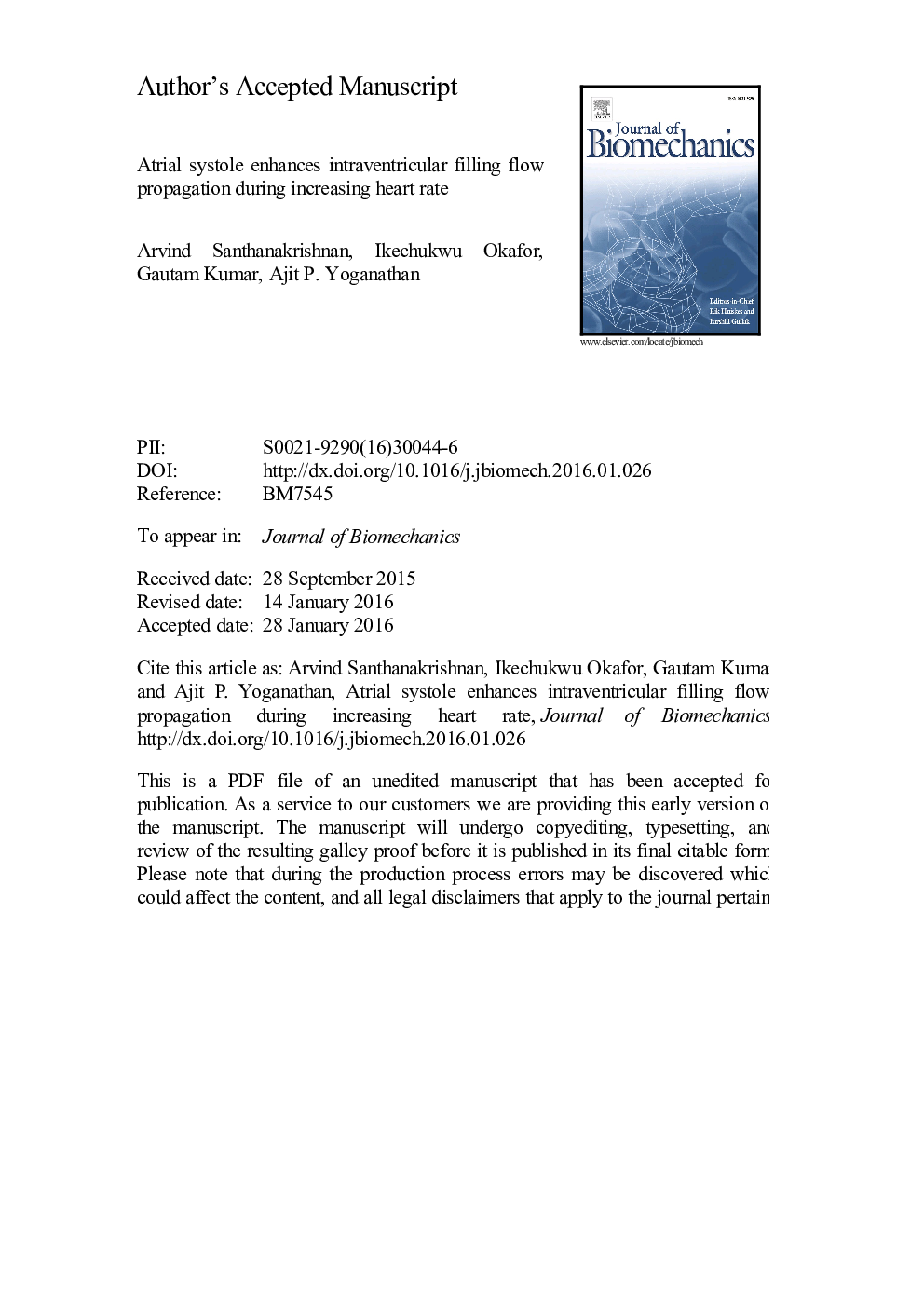| Article ID | Journal | Published Year | Pages | File Type |
|---|---|---|---|---|
| 871806 | Journal of Biomechanics | 2016 | 22 Pages |
Abstract
Diastolic fluid dynamics in the left ventricle (LV) has been examined in multiple clinical studies for understanding cardiac function in healthy humans and developing diagnostic measures in disease conditions. The question of how intraventricular filling vortex flow pattern is affected by increasing heart rate (HR) is still unanswered. Previous studies on healthy subjects have shown a correlation between increasing HR and diminished E/A ratio of transmitral peak velocities during early filling (E-wave) to atrial systole (A-wave). We hypothesize that with increasing HR under constant E/A ratio, E-wave contribution to intraventricular vortex propagation is diminished. A physiologic in vitro flow phantom consisting of a LV physical model was used for this study. HR was varied across 70, 100 and 120 beats per minute (bpm) with E/A of 1.1-1.2. Intraventricular flow patterns were characterized using 2D particle image velocimetry measured across three parallel longitudinal (apical-basal) planes in the LV. A pair of counter-rotating vortices was observed during E-wave across all HRs. With increasing HR, diminished vortex propagation occurred during E-wave and atrial systole was found to amplify secondary vorticity production. The diastolic time point where peak vortex circulation occurred was delayed with increasing HR, with peak circulation for 120Â bpm occurring as late as 90% into diastole near the end of A-wave. The role of atrial systole is elevated for higher HR due to the limited time available for filling. Our baseline findings and analysis approach can be applied to studies of clinical conditions where impaired exercise tolerance is observed.
Related Topics
Physical Sciences and Engineering
Engineering
Biomedical Engineering
Authors
Arvind Santhanakrishnan, Ikechukwu Okafor, Gautam Kumar, Ajit P. Yoganathan,
